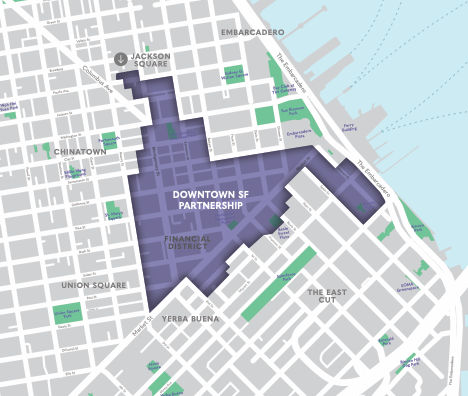About The Downtown SF Partnership

Our Mission
We lead the way in building a thriving downtown where business gets done, people feel welcome, come to explore, and make memories.
We’re a nonprofit community benefit district working to enhance the downtown core, the traditional Financial District and historic Jackson Square through public/private partnerships, placemaking, activating the public realm, clean and safe operations, marketing support, economic development, and more.
Visit our FAQ page to learn more about us.
Our Vision
Downtown San Francisco is an economic powerhouse and historic core, redefining what makes our city vibrant, resilient, and welcoming.
Our Values
WE ARE
Collaborative -- We harness the power of partners; the most enduring innovative and nuanced solutions are when partners work together, building long-term solutions around a common goal.
Entrepreneurial -- Our spirit and a way of doing things that leans into being nimble, pivoting quickly, and taking calculated risks to advance or defend innovative ideas.
Impactful -- We're strategic and thoughtful in our work and leverage opportunities that amplify our work and lead to substantive changes for the District.
Celebratory -- We know what's authentic and distinctive about our downtown and we continually advocate for, preserve, promote and celebrate it.
Our District Map
Learn more about our things to do, restaurants, nightlife, shopping, services, public art, getting here, parking and more.